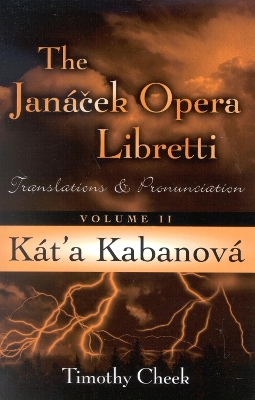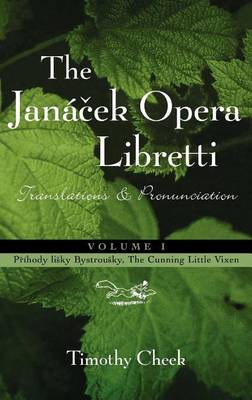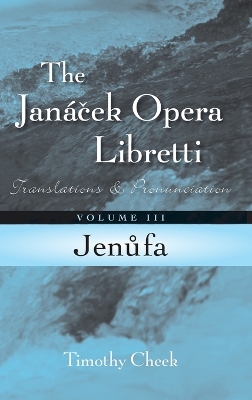The Janacek Opera Libretti
3 total works
Responding to the ever-increasing popularity and international performances of operas by the Czech composer Leo? Janacek, this volume is the second in a series to meet the needs of English-speaking singers, conductors, coaches, and stage directors. Every word of Kat'a Kabanova is translated into English, and idiomatic translations are provided, including translations of stage and musical directions. In addition, the International Phonetic Alphabet (IPA) is used to indicate pronunciation, following the clearly-presented method given in the author's book Singing in Czech: A Guide to Czech Lyric Diction and Vocal Repertoire (Scarecrow Press, 2001). Included are practical notes about Janacek's style, both in general terms and specific issues relating to this opera. A plot summary is provided along with translations of characters, ranges, and the pronunciation of their names. The entire volume is organized in a clear, readable format, resulting in a book that will help to make productions of Kat'a Kabanova in the original Czech much easier a task than ever before.
Responding to the ever-increasing popularity and international performances of operas by the Czech composer Leo? Janacek, this volume, the first in the Janacek Opera Libretti Series, is the full translation of The Cunning Little Vixen in English alongside the original Czech. This work meets the needs of English-speaking singers, conductors, coaches, and stage directors and conveniently provides idiomatic and word-for-word translations, including translations of stage and musical directions. In addition, the International Phonetic Alphabet (IPA) is used to indicate Czech pronunciation, following the clearly-presented method given in the author's book Singing in Czech: A Guide to Czech Lyric Diction and Vocal Repertoire, with a foreword by Sir Charles Mackerras. Cheek also provides practical notes about Janacek's style, both in general terms and specific issues relating to this opera along with a plot summary with translations and vocal ranges of characters and the pronunciation of their names. This entire volume is organized in a clear, readable format, resulting in a book that will help to make productions of The Cunning Little Vixen in the original Czech much easier a task than ever before.
Czech composer Leos Janacek's most famous opera, Jenufa is a harrowing tale of forbidden love, abandonment, hypocrisy, desperation, and tragic infanticide. As today's second most frequently performed Czech opera (following Dvorak's Rusalka), Jenufa holds a prominent place in international opera repertoire and continues to draw the attention of new audiences.
Drawing on both scholarly studies and production experience, Timothy Cheek presents an original English-language translation of the original Czech libretto. As with the first two books in the Janacek Opera Libretti series (Prihody lisky Bystrousky, The Cunning Little Vixen and Kat'a Kabanova), this volume consists of two parts. Part One gives background on the opera, a discussion about the various voice types and roles, Janacek's style and Czech performance traditions, Czech folk costumes, and a summary of Czech pronunciation and inflection. Part Two provides the original Czech libretto, word-for-word English translations, idiomatic English translations, IPA for pronunciation of the Czech, translations of the stage directions, and notes about certain words in Czech dialect.
As a valuable resource not only for performers and directors, but also historians and opera lovers, this book brings new accessibility to a beloved and timeless opera.
Drawing on both scholarly studies and production experience, Timothy Cheek presents an original English-language translation of the original Czech libretto. As with the first two books in the Janacek Opera Libretti series (Prihody lisky Bystrousky, The Cunning Little Vixen and Kat'a Kabanova), this volume consists of two parts. Part One gives background on the opera, a discussion about the various voice types and roles, Janacek's style and Czech performance traditions, Czech folk costumes, and a summary of Czech pronunciation and inflection. Part Two provides the original Czech libretto, word-for-word English translations, idiomatic English translations, IPA for pronunciation of the Czech, translations of the stage directions, and notes about certain words in Czech dialect.
As a valuable resource not only for performers and directors, but also historians and opera lovers, this book brings new accessibility to a beloved and timeless opera.


